




Washing machines have become an essential appliance in our homes, providing us with the convenience of clean clothes at the push of a button. However, with so many different functions and settings, it can be overwhelming to understand what each one does. One such function is “rinse and spin,” which is commonly found on modern washing machines. Understanding how this function works can help you make the most of your machine’s capabilities and ensure your clothes are washed efficiently.
The “rinse and spin” function on a washing machine is designed to remove any remaining detergent and dirt from your clothes after the main wash cycle. This function is particularly useful if you have sensitive skin or allergies, as it helps to reduce any potential irritants that may be left behind. Additionally, rinsing your clothes thoroughly can help prevent any residue from building up over time, which can lead to odours or damage to the fabric.
When you select the “rinse and spin” function, your washing machine will perform a series of rinses using clean water to ensure all the detergent is removed. It will then spin the clothes at a high speed to remove excess water, leaving them slightly damp and ready for drying. This function is typically shorter than the main wash cycle, as it only focuses on rinsing and spinning and does not require any additional detergent.
The Importance of the “Rinse and Spin” Function
The “rinse and spin” function is an essential feature found on most washing machines. It plays a vital role in ensuring that your clothes are thoroughly cleaned while maintaining their quality and reducing the risk of damage.
Cleansing Effect
The rinse and spin function is specifically designed to remove any remaining detergent or soap residue from your clothes. During the wash cycle, the washing machine agitates the clothes to help loosen dirt and grime. However, some detergent may remain trapped within the fibers. The rinse and spin function uses clean water to thoroughly rinse away any leftover detergent, leaving your clothes cleaner and fresher.
Preventing Skin Irritation and Allergies
For individuals with sensitive skin or allergies, it is crucial to ensure that all traces of detergent are removed from their clothes. Residual detergent can cause skin irritation, itching, or even allergic reactions. By utilizing the rinse and spin function, you can effectively eliminate these risks, allowing for a more comfortable and healthier clothing experience.
Improving Fabric Quality and Longevity

Excessive detergent residue left on clothes can contribute to fabric damage over time. Soap buildup can weaken fibers, cause discoloration, and reduce the lifespan of the garment. By using the rinse and spin function, you can minimize the amount of detergent residue left on your clothes, thus preserving their quality and preventing premature wear and tear.
Reducing Energy and Water Consumption
Implementing a thorough rinse and spin cycle helps minimize the number of wash cycles required to achieve clean clothes. By effectively removing detergent residue, you can avoid the need for additional wash cycles, resulting in energy and water savings. This not only benefits the environment but also reduces your utility bills.
Final Thoughts
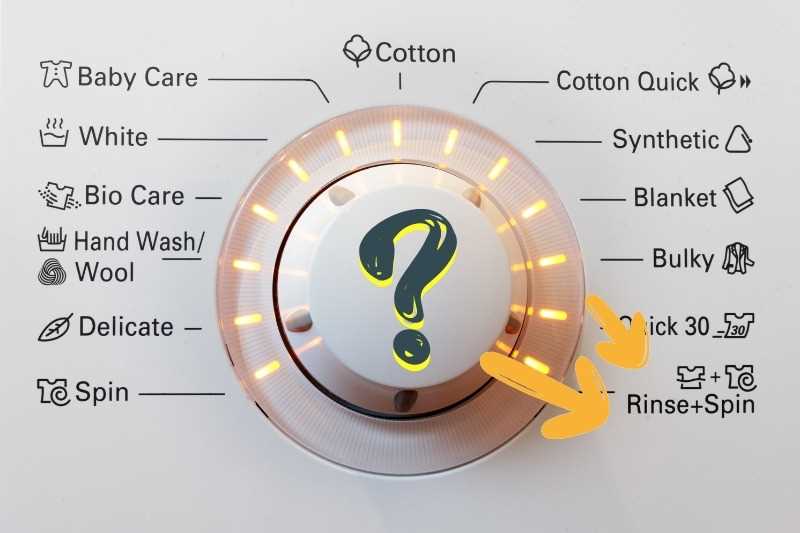
In conclusion, the “rinse and spin” function on a washing machine is a crucial step in the laundry process. It ensures that your clothes are properly cleaned, free from detergent residue, and safe for sensitive skin. Additionally, it helps maintain the longevity of your garments while promoting energy and water conservation. Taking advantage of this function will not only result in cleaner clothes but also benefit your overall laundry routine.
How the “Rinse and Spin” Cycle Works
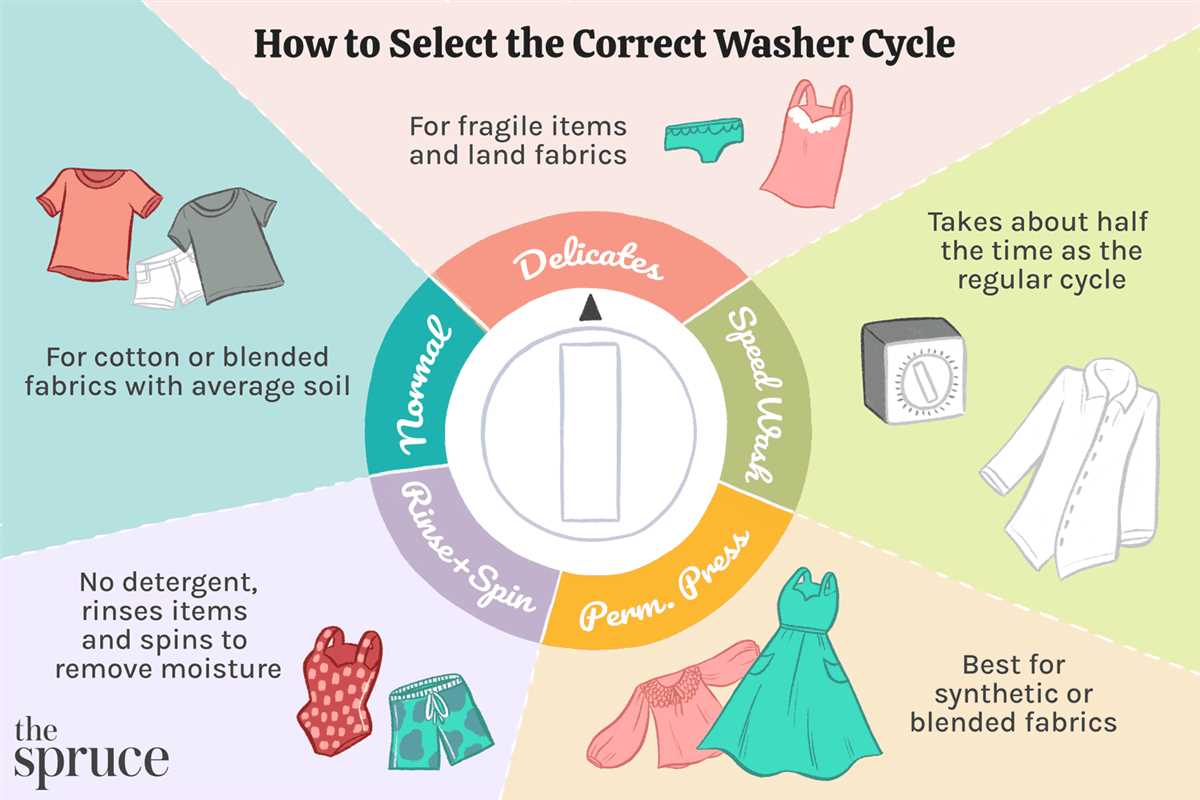
The “rinse and spin” cycle is an essential part of a washing machine’s operation. This cycle is designed to remove any remaining detergent, dirt, and debris from the clothes after the main wash cycle.
The Rinse Process
During the rinse cycle, the washing machine fills up with clean water. This water is typically at a lower temperature than the water used in the main wash cycle. The machine then agitates the clothes to ensure that the water reaches all areas of the garments, allowing it to wash away any remaining detergent and loosened dirt.
After the agitation process is complete, the machine drains out the dirty water and refills with fresh water for a second rinse. This second rinse helps to ensure that all detergent and dirt particles are thoroughly removed from the clothes.
The Spin Process
Once the rinsing is complete, the washing machine enters the spin cycle. During this cycle, the machine rapidly spins the drum at a high speed. The centripetal force generated by the spinning drum pulls the water out of the clothes, thus helping to accelerate the drying process.
The spinning process also helps to remove any remaining detergent and debris by forcing them out of the clothes and towards the drum walls. These particles, along with the water, are then drained out of the machine.
Benefits of the Rinse and Spin Cycle
- Thorough cleaning: The rinse cycle ensures that all detergent and dirt are removed from the clothes, leaving them clean and fresh.
- Improved rinsing: The second rinse helps to eliminate any residual detergent or dirt that might have been missed during the main wash cycle.
- Accelerated drying: The high-speed spinning of the drum removes excess water from the clothes, reducing the drying time required.
- Prevents detergent residue: By thoroughly rinsing the clothes, the “rinse and spin” cycle helps to prevent detergent residue from building up on the garments, which can cause skin irritation or reduce the fabric’s lifespan.
Overall, the “rinse and spin” cycle plays a crucial role in ensuring that clothes are thoroughly cleaned, rinsed, and dried, providing optimal results for users.
Benefits of Using the “Rinse and Spin” Function
The “Rinse and Spin” function on a washing machine offers several benefits to the user. This function is typically used after the main wash cycle to remove any remaining soap residue and give the clothes a final rinse. Here are some of the advantages of using the “Rinse and Spin” function:
1. Thoroughly Cleans Clothes
Using the “Rinse and Spin” function ensures that all traces of detergent and dirt are removed from the clothes. This helps to prevent any skin irritation that may result from leftover detergent residue on the fabric.
2. Improves Washing Performance

By giving the clothes an additional rinse, the “Rinse and Spin” function improves the overall washing performance. This function can also be useful for removing tough stains that may not have come off with the main wash cycle alone.
3. Reduces Soap Residue
The “Rinse and Spin” function is especially beneficial for people with sensitive skin or allergies. It helps to minimize soap residue on the clothes, which can cause skin irritation or allergic reactions.
4. Saves Water and Energy
Using the “Rinse and Spin” function allows you to save water and energy compared to running a full wash cycle. This function provides an efficient way to rinse the clothes without going through the entire washing process again.
5. Removes Excess Moisture
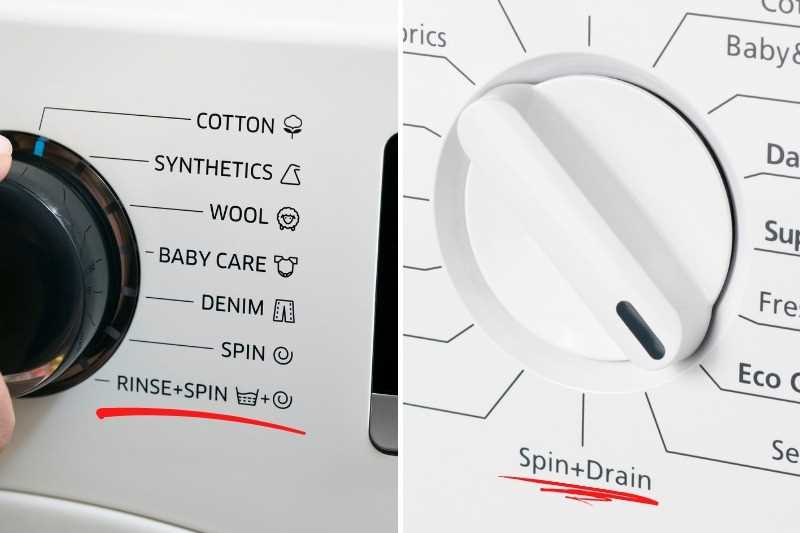
After the “Rinse and Spin” function completes, the clothes are left with less moisture compared to the end of the main wash cycle. This allows for faster drying times and reduces the time needed for using a dryer or hanging the clothes out to dry.
6. Maintains Fabric Softness
Running the clothes through the “Rinse and Spin” function helps to maintain the softness of the fabric. This is particularly important for delicate fabrics that may become stiff or rough if excess detergent is left behind.
7. Extends the Life of the Washing Machine
The “Rinse and Spin” function can help extend the life of the washing machine by reducing the workload on the main wash cycle. By using this function regularly, you can prevent the buildup of residue in the machine, keeping it clean and efficient.
Conclusion
The “Rinse and Spin” function on a washing machine offers several benefits, including thorough cleaning, improved washing performance, reduced soap residue, water and energy savings, faster drying times, fabric softness retention, and increased washing machine longevity. Using this function as part of your laundry routine can help ensure clean and fresh-smelling clothes while also taking care of your washing machine.
Tips for Using the “Rinse and Spin” Function
The “Rinse and Spin” function on a washing machine is a useful feature that can help improve the effectiveness of your wash. Here are some tips to make the most out of this function:
1. Separate Your Laundry
Before using the “Rinse and Spin” function, it’s important to separate your laundry properly. Sort your clothes by colour, fabric type, and level of dirtiness. This will prevent any colours from bleeding and ensure that your clothes are washed thoroughly.
2. Use the Right Amount of Detergent
When using the “Rinse and Spin” function, make sure to use the right amount of detergent. Too much detergent can cause excessive foaming and make it difficult for the machine to rinse your clothes properly. Follow the recommended dosage on the detergent packaging and adjust accordingly based on the size and dirtiness of your load.
3. Choose the Correct Water Temperature
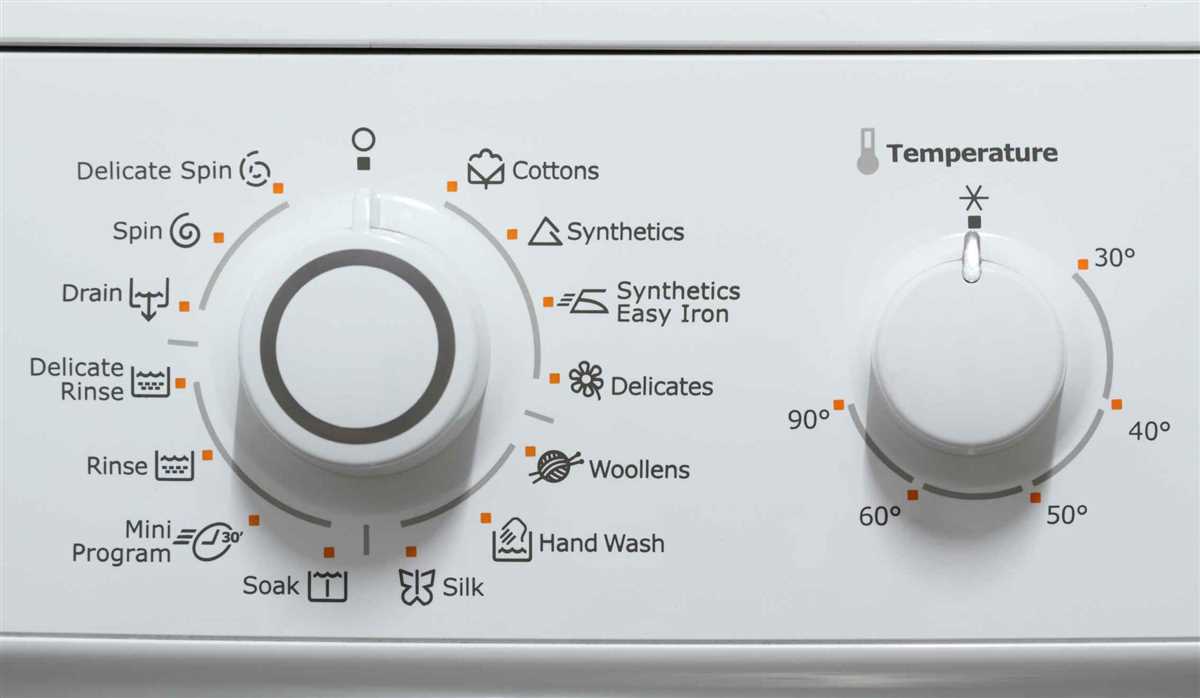
Depending on the type of fabric and the level of dirtiness, select the appropriate water temperature for the “Rinse and Spin” cycle. Cold water is ideal for delicates and clothes that require gentle handling, while warm water is effective for removing stains and dirt. Avoid using hot water unless necessary, as it can damage certain fabrics.
4. Avoid Overloading the Machine
To ensure the “Rinse and Spin” function works effectively, avoid overloading the machine. Overloading can prevent clothes from rinsing properly and can cause tangling and wrinkling. Follow the recommended load size indicated on the washing machine and distribute your laundry evenly.
5. Extend the Spin Cycle
If you want your clothes to come out of the washing machine with less moisture, consider extending the spin cycle on the “Rinse and Spin” function. This will help remove excess water from your clothes, reducing drying time and energy consumption.
6. Clean the Washing Machine Regularly
Regularly cleaning your washing machine is essential to maintain its performance. Use a washing machine cleaner or a mixture of vinegar and baking soda to remove any buildup of detergent residue, lint, or debris that can affect the effectiveness of the “Rinse and Spin” function.
7. Use Fabric Softener Wisely
Using fabric softener in the “Rinse and Spin” function can help make your clothes feel softer and reduce static cling. However, be sure to follow the instructions on the fabric softener bottle and use it sparingly. Using too much fabric softener can leave residue on your clothes and reduce absorbency.
8. Check for Proper Drainage
Prior to starting the “Rinse and Spin” cycle, ensure that the washing machine has proper drainage. Check that the drain hose is not clogged or kinked, and that the drain pump is functioning correctly. This will prevent water from pooling in the drum and ensure that your clothes are rinsed properly.
By following these tips, you can make the most out of the “Rinse and Spin” function on your washing machine and achieve cleaner, fresher clothes with each wash.
Common Issues with the “Rinse and Spin” Function
While the “Rinse and Spin” function is designed to be a convenient and effective feature on washing machines, sometimes issues may arise that can hinder its performance. Here are some common issues that you may encounter:
1. Clothes Remaining Wet
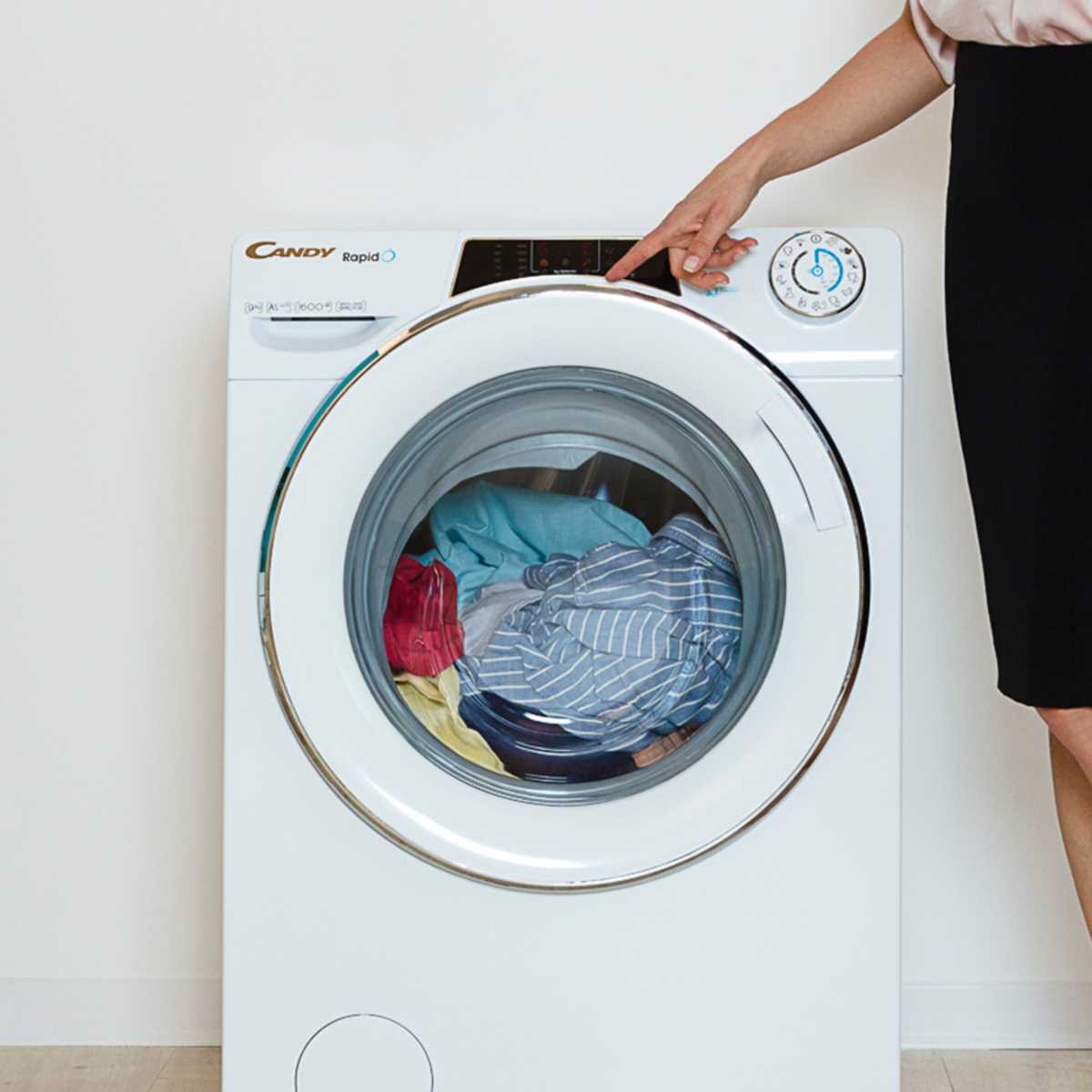
If your clothes are still wet after the “Rinse and Spin” cycle has completed, there could be several possible causes:
- The load size may be too large for the machine to properly rinse and spin.
- The machine may not be draining properly, resulting in excess water being left behind.
- The spin cycle speed may be set too low, preventing the clothes from being effectively dried.
To resolve this issue, try reducing the load size, checking the drainage system for any blockages, and increasing the spin cycle speed if adjustable.
2. Excessive Noise or Vibration
If your washing machine is making excessive noise or vibrating excessively during the “Rinse and Spin” cycle, it could be due to a few reasons:
- The machine may be unbalanced due to an uneven load distribution.
- The machine’s leveling feet may not be properly adjusted.
- There could be a problem with the machine’s suspension system.
To address this issue, ensure that you are distributing the load evenly in the machine, adjust the leveling feet to make sure the machine is stable, and contact a professional if you suspect a problem with the suspension system.
3. Long Cycle Times

If the “Rinse and Spin” cycle is taking longer than expected, there are a few things to consider:
- The machine may be set to a high water level, which can prolong the cycle time.
- The machine may be detecting additional rinses that are not necessary.
- There could be a problem with the machine’s sensors or control panel.
To shorten the cycle time, you can try setting the water level to a lower setting, double-check the settings to ensure unnecessary rinses are not selected, and contact a professional if you suspect an issue with the sensors or control panel.
4. Incomplete or Spotty Rinse
If your clothes are not being rinsed properly and are left with soap residue, there are a few factors to consider:
- The detergent may not be properly dispensed or diluted.
- The machine’s water pressure or temperature settings may not be suitable for rinsing.
- There could be a problem with the machine’s water inlet valve or filter.
To improve the rinse quality, make sure to use the recommended amount of detergent and properly dilute it if necessary, check the water pressure and temperature settings to ensure they are appropriate for rinsing, and inspect the water inlet valve and filter for any blockages or malfunctions.
5. Error Messages
If you encounter error messages related to the “Rinse and Spin” function, it is advisable to consult the machine’s user manual or contact the manufacturer for specific troubleshooting steps. Error messages may indicate a problem with the machine’s sensors, control panel, or other components that require professional attention.
By understanding these common issues with the “Rinse and Spin” function and taking appropriate steps to address them, you can ensure that your washing machine operates efficiently and effectively.
FAQ
What is the purpose of the “Rinse and Spin” function on a washing machine?
The “Rinse and Spin” function on a washing machine is designed to remove detergent residue and any remaining dirt or stains from the clothes after the main wash cycle. It helps in thoroughly rinsing the clothes to ensure they are free from any soap particles.
When should I use the “Rinse and Spin” function?
The “Rinse and Spin” function should be used when you want to make sure your clothes are well-rinsed to remove all detergent residue. It is especially useful for people with sensitive skin who may be allergic to leftover detergent on their clothes.
How does the “Rinse and Spin” function work?
The “Rinse and Spin” function works by filling the washing machine drum with fresh water and agitating the clothes to remove any remaining detergent or dirt particles. It then drains the water and spins the clothes at a high speed to remove excess water, leaving them ready for drying.
Is the “Rinse and Spin” function necessary for every load of laundry?
The “Rinse and Spin” function is not necessary for every load of laundry. It is usually recommended to use it when you have heavily soiled clothes or when you want to ensure a thorough rinse. For lightly soiled or delicate items, using the main wash cycle may be sufficient.
Can I skip the “Rinse and Spin” cycle on my washing machine?
Yes, you can skip the “Rinse and Spin” cycle on your washing machine if you believe that the clothes have been adequately rinsed during the main wash cycle. However, using the “Rinse and Spin” function can provide additional assurance that the clothes are completely free from detergent residue.













